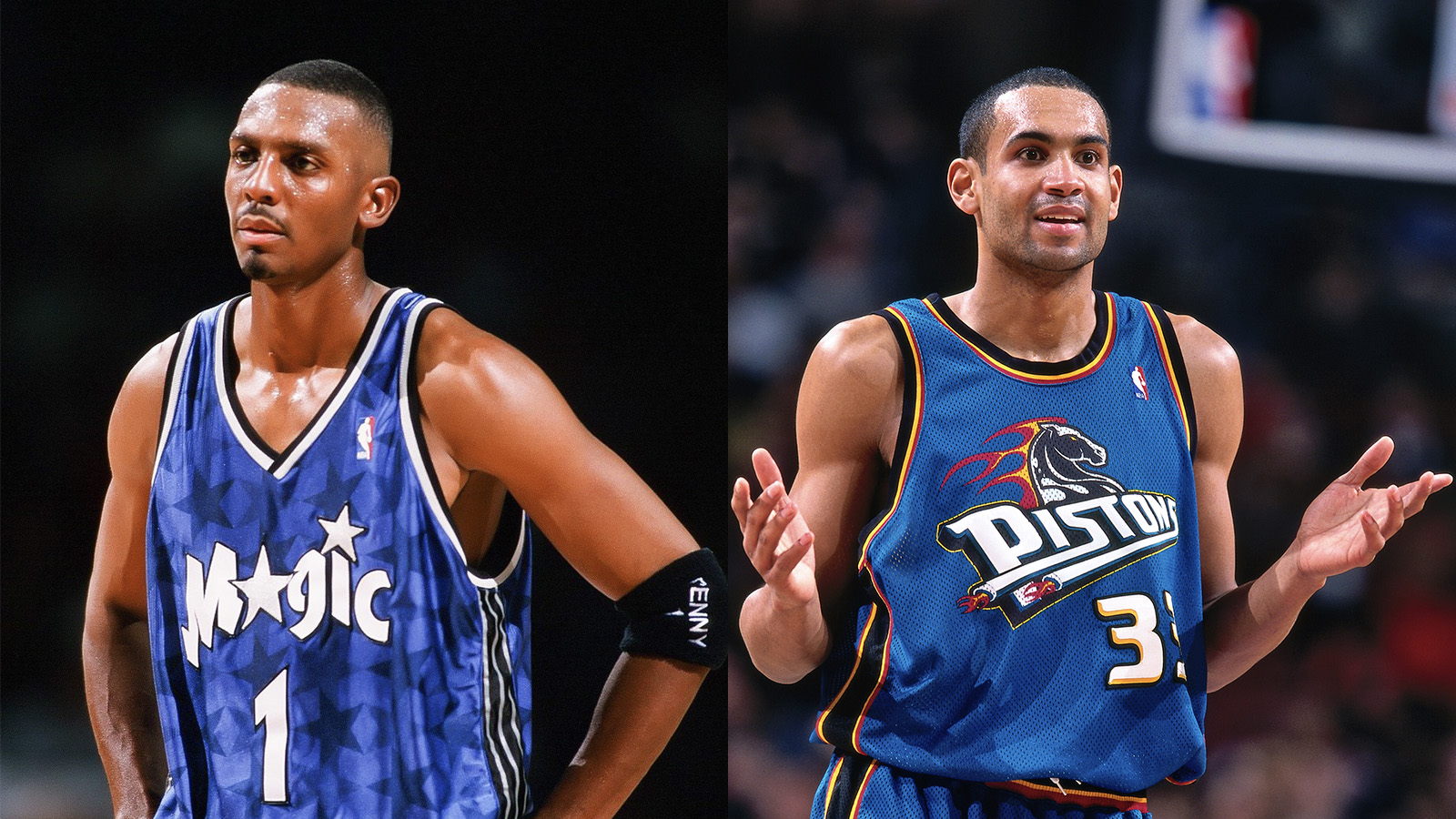
Anthony Hardaway #1 of the Orlando Magic and Grant Hill of the Detroit Pistons. /VCG
Anthony Hardaway #1 of the Orlando Magic and Grant Hill of the Detroit Pistons. /VCG
Since Michael Jordan won his third straight NBA championship and retired in 1993 summer, the league began to look for his successor (though Jordan returned in 1995). There were Tracy McGrady, Vince Carter, Ray Allen and of course, Kobe Bryant, but the following two names were also linked to Jordan.
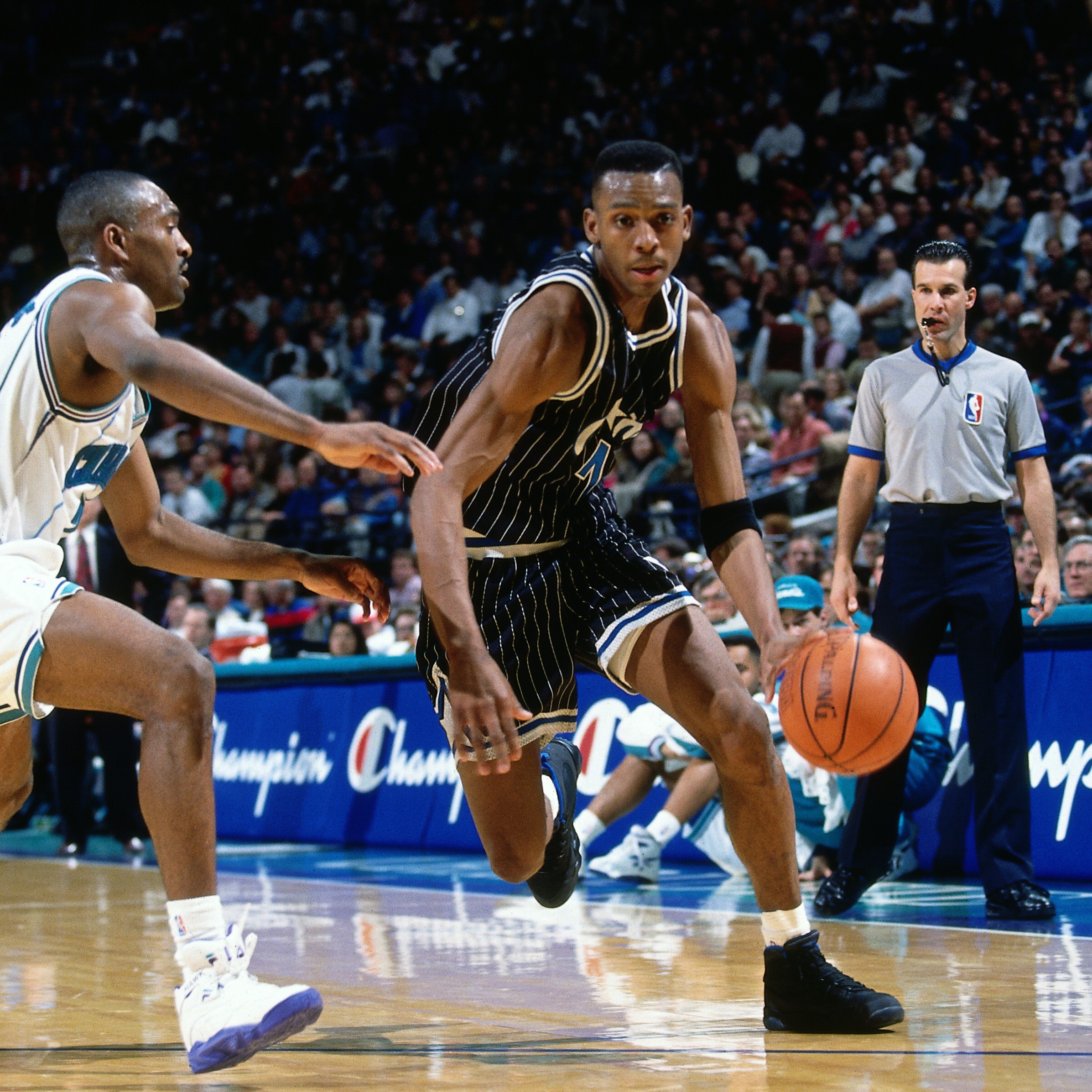
Anthony Hardaway #1 of the Orlando Magic tries to penetrate in the game against the Charlotte Hornets at the Charlotte Coliseum in Charlotte, North Carolina, 1994. /VCG
Anthony Hardaway #1 of the Orlando Magic tries to penetrate in the game against the Charlotte Hornets at the Charlotte Coliseum in Charlotte, North Carolina, 1994. /VCG
Anthony "Penny" Hardaway
The Orlando Magic in 1993 had the first-overall draft pick and the best player in that class of rookies was Chris Webber from the University of Michigan. However, the team chose to trade with the Golden State Warriors to land the third select, 21-year-old Anthony Hardaway from the Memphis State University (now the University of Memphis).
Back then, Hardaway was relatively thin (88 kilograms) and was not a qualified 3-pointer shooter (31.2 percent before 1997). However, he was a 2.01-meter-tall point guard who had probably the best combination of dribbling, passing and footwork in his size.
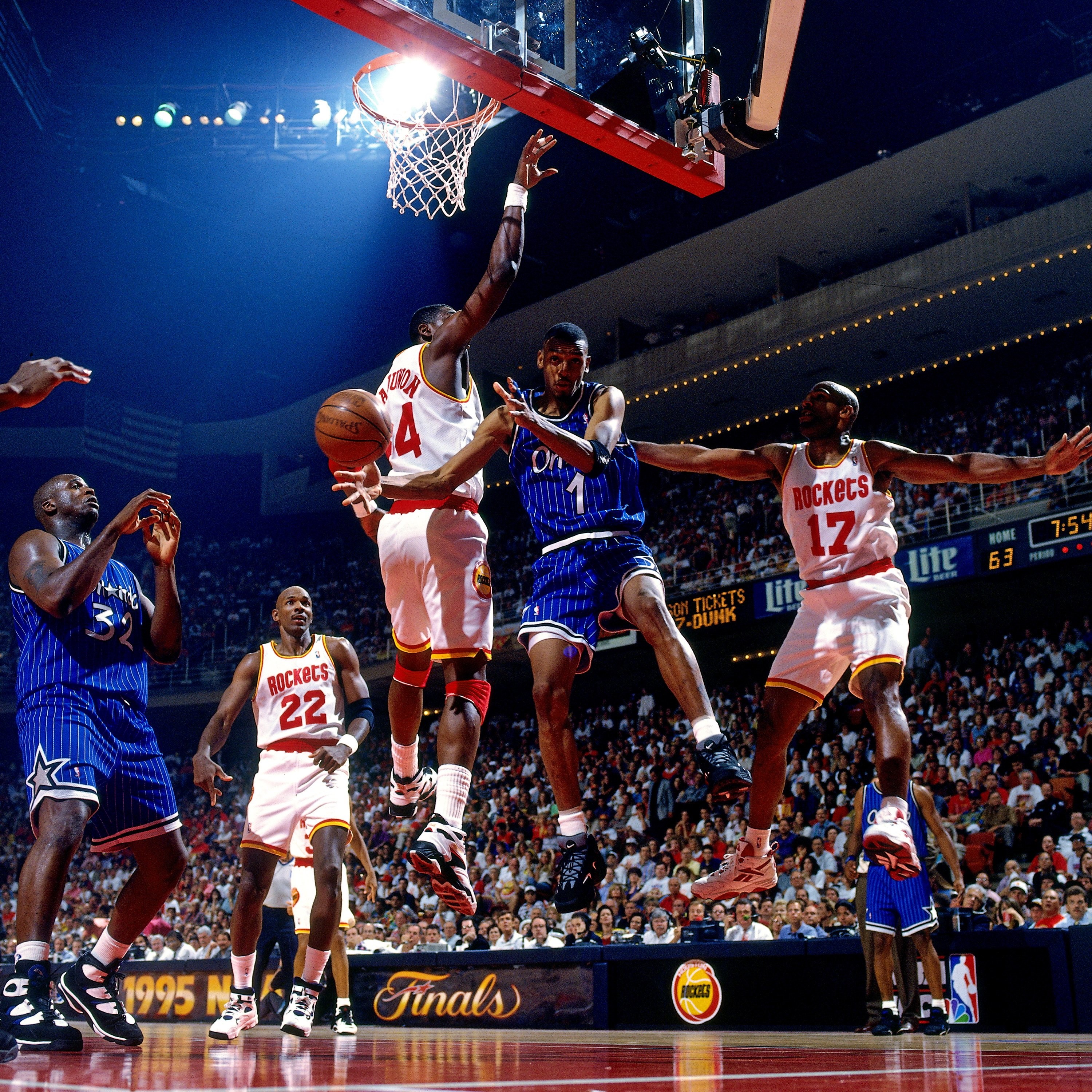
Anthony Hardaway #1 of the Orlando Magic passes the ball in Game 3 of the NBA Finals against the Houston Rockets at the Summitt in Houston, Texas, June 11, 1995. /VCG
Anthony Hardaway #1 of the Orlando Magic passes the ball in Game 3 of the NBA Finals against the Houston Rockets at the Summitt in Houston, Texas, June 11, 1995. /VCG
Though Hardaway could do the long-stride penetration like McGrady (they shared the same long legs), he preferred to use spin/half spin to dodge defense and he was one of the best at it. Such style came from great body control which plus his height and court vision, made Hardaway a great posing up attacker and a dangerous passer. More importantly, Hardaway only needed a small piece of floor to make his offensive move so he could co-exist with Shaquille O'Neal under the rim.
At that time, people praised Hardaway's slashing and orchestrating. He was considered the league's best guard in his second year in 1995 (while Jordan was rusty returning from baseball). In the next season, he received the third-most votes in the NBA MVP competition.
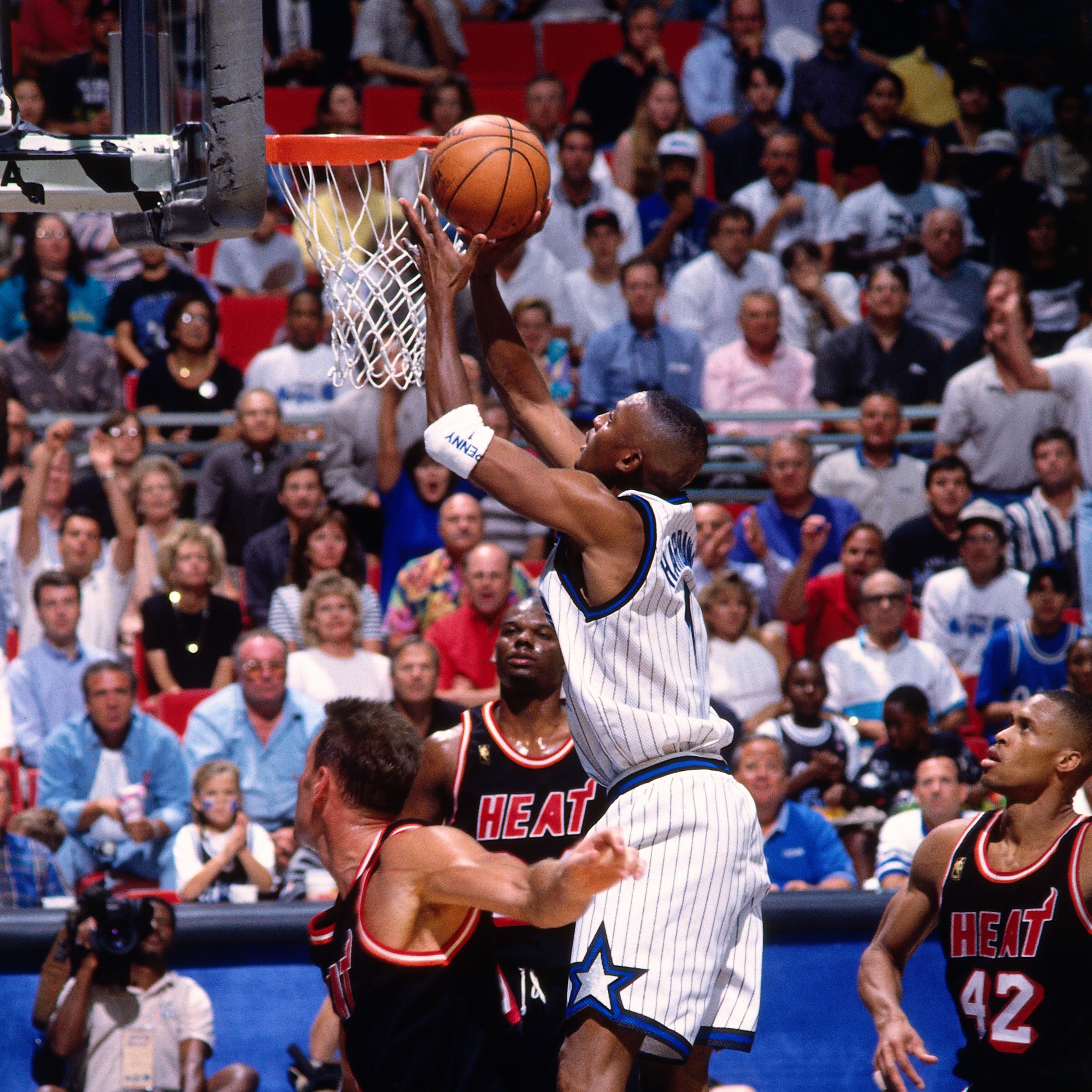
Anthony Hardaway #1 of the Orlando Magic shoots the ball in Game 3 of the Eastern Conference playoffs against the Miami Heat at the Orlando Arena in Orlando, Florida, April 29, 1997. /VCG
Anthony Hardaway #1 of the Orlando Magic shoots the ball in Game 3 of the Eastern Conference playoffs against the Miami Heat at the Orlando Arena in Orlando, Florida, April 29, 1997. /VCG
Nonetheless, no one realized that they were wrong about Hardaway until the 1997 playoffs. The Magic met 61-21 Miami Heat and soon trailed 2-0. Pat Riley copied his tenacious defensive system from New York to Miami around 27-year-old Alonzo Mourning who's at his best time.
Then Hardaway stood out to score 42, 41 and 33 points in the following three games. Though Orlando lost the series 3-2 in the end, the whole world knew how intimidating Hardaway could get when he switched from a pure orchestrator to a scorer.
Then in the next season, Hardaway suffered the devastating knee injury which sentenced all his ambitions to death. He managed to return to the court later, but that fascinating guard and all the expectations he used to carry were long gone.
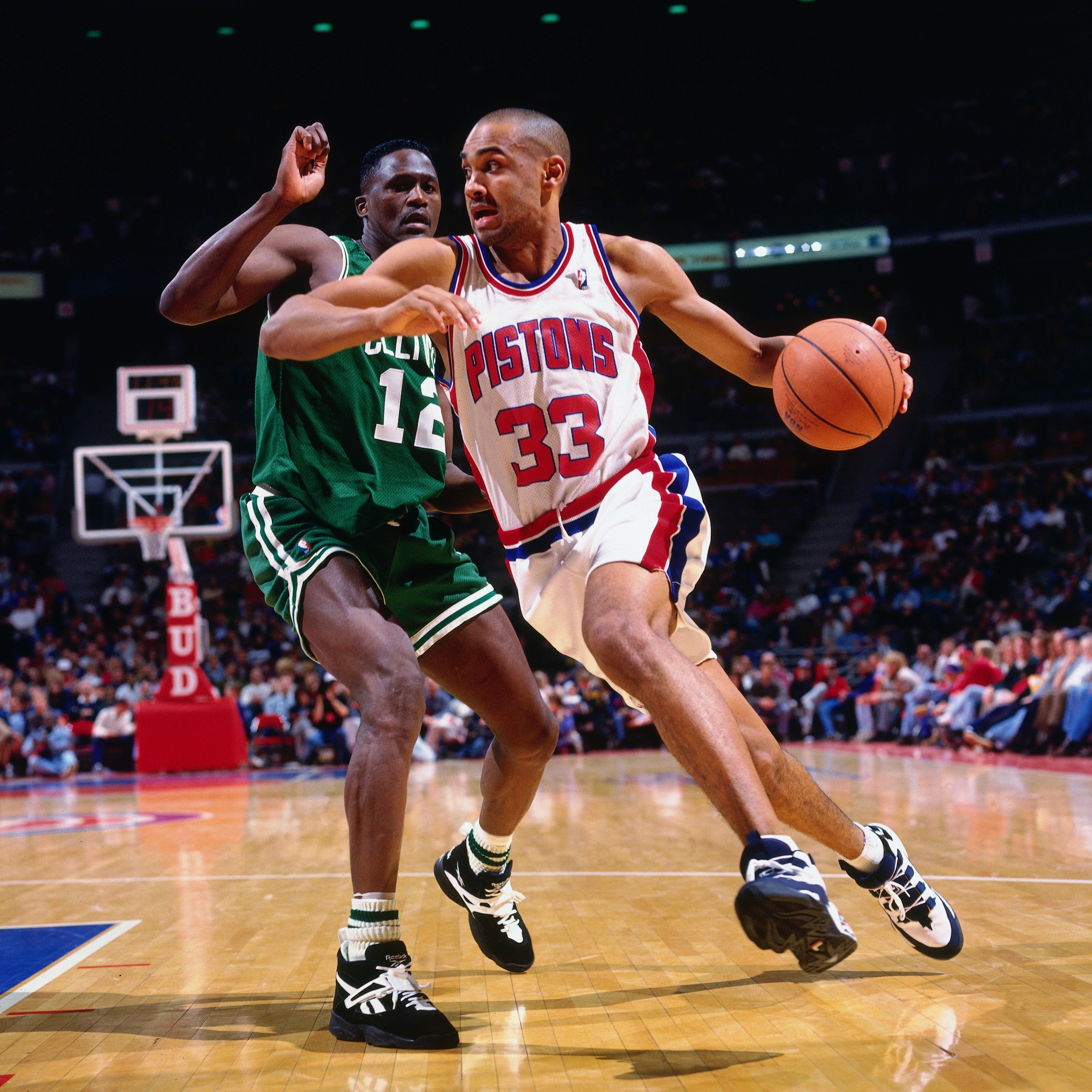
Grant Hill #33 of the Detroit Pistons in the game against the Boston Celtics at the Palace of Auburn Hills in Auburn Hills, Michigan, 1995. /VCG
Grant Hill #33 of the Detroit Pistons in the game against the Boston Celtics at the Palace of Auburn Hills in Auburn Hills, Michigan, 1995. /VCG
Grant Hill
The Detroit Pistons were going through three of the darkest years in franchise history from 1992 to 1994. The Bad Boys were either aging (Isiah Thomas), retiring (Bill Laimbeer), or fooling around (Dennis Rodman). Meanwhile, no one felt bad for them after they bulled the rest of the league with their physical, brutal way of playing.
Then the team's third overall select I the 1994 NBA Draft broke the darkness for Detroit. 22-year-old Grant Hill from Duke University changed everything. He did not try to score the opponents or shoot trash talks to them. He did not show his muscle to camera after finishing a dunk. He smiled in a gentle way talking to the press and always chose the proper words.
More importantly, Hill could fly and his game reminded the league of how Jordan played. Unlike Hardaway's complicated spin and footwork, Hill penetrated via the quickest first step of the NBA. Most defenders seemed frozen when Hill made a crossover to flash through them. When they looked back, Hill already scored.
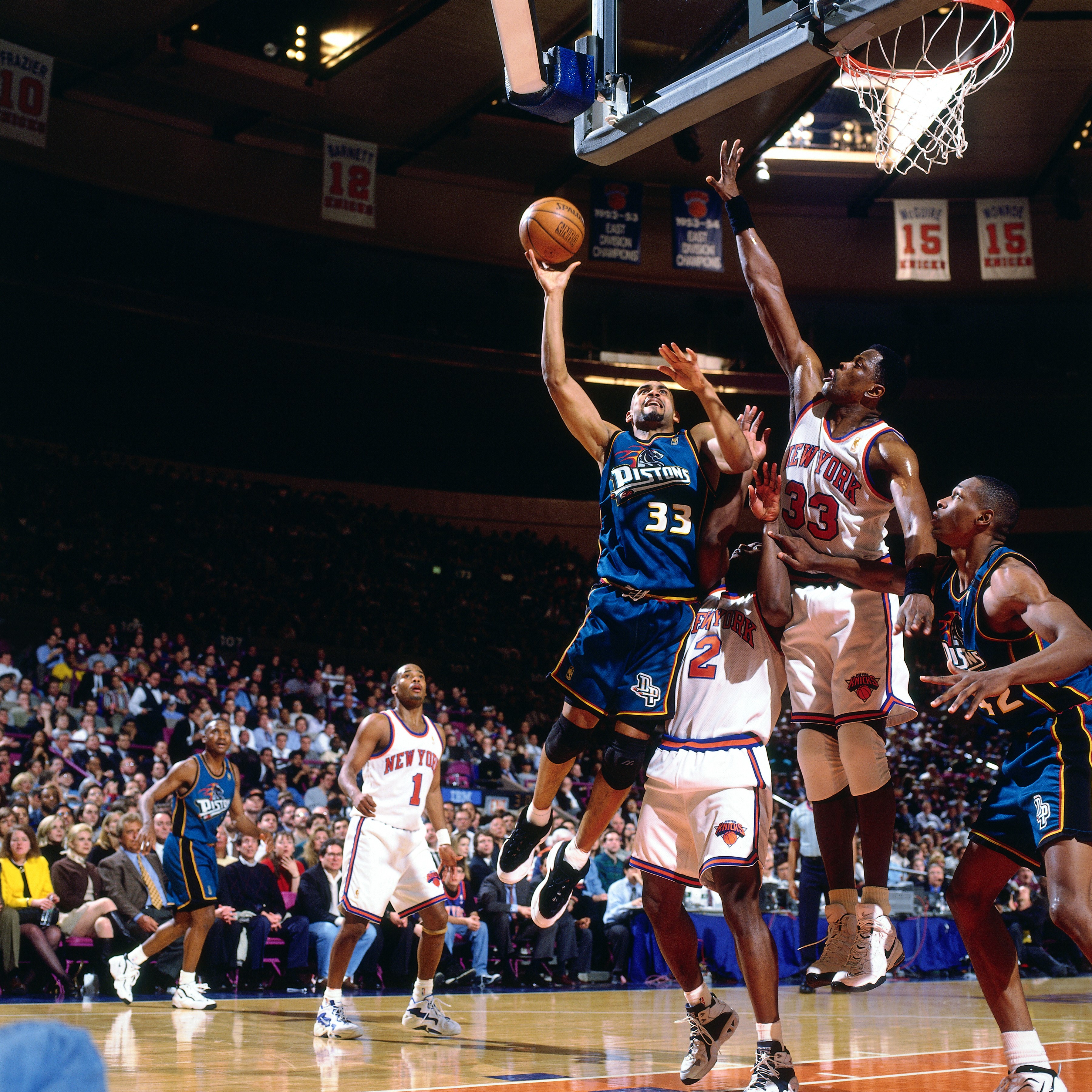
Grant Hill #33 of the Detroit Pistons shoots the ball in the game against the New York Knicks at the Madison Square Garden in New York City, March 26, 1997. /VCG
Grant Hill #33 of the Detroit Pistons shoots the ball in the game against the New York Knicks at the Madison Square Garden in New York City, March 26, 1997. /VCG
Meanwhile, like Hardaway, Hill was a great teammate. Before 2000, he averaged 20.7 points, 8.0 rebounds and 6.4 assists per game. As a 2.03-meter-tall small forward, he led the Pistons like Larry Bird to the Boston Celtics. In his rookie season, Hill received the most votes in All-Star selection, the first and only rookie who ever did it. Then in 1996, he even beat Jordan who led the Chicago Bulls on the way towards a 72-10 record in All-Star voting.
In 1999, Hill spent the whole summer practicing his jump shooting. Then in the 1999-2000 season, he raised his average scoring to 25.8 points. Jordan already retired and the new generation of perimeter stars – Allen Iverson, Bryant, McGrady, Carter, Allen – were still growing. The league was looking at Hill to become the next No. 1 player.
Then his ankle began to work against him for seven years, long enough for people to forget all of their expectations on Hill.
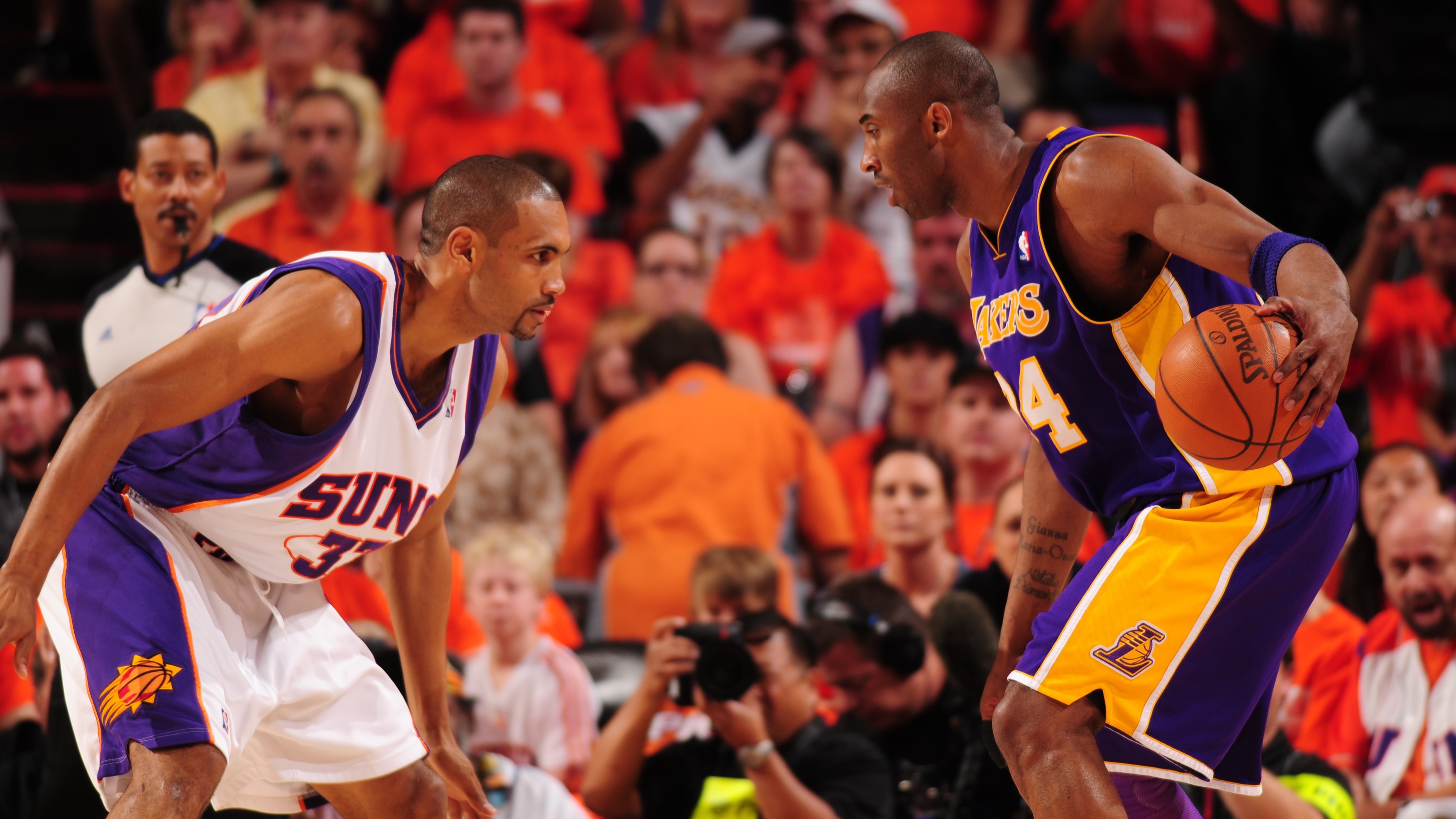
Grant Hill (L) of the Phoenix Suns defends Kobe Bryant of the Los Angeles Lakers in Game 6 of the Western Conference Finals at the U.S. Airways Center in Phoenix, Arizona, May 29, 2010. /VCG
Grant Hill (L) of the Phoenix Suns defends Kobe Bryant of the Los Angeles Lakers in Game 6 of the Western Conference Finals at the U.S. Airways Center in Phoenix, Arizona, May 29, 2010. /VCG
Nonetheless, Hill's story ended different from Hardaway's. He signed with the Phoenix Suns in 2007 and met magical medical staff. Of course Hill could not dominate the game like he used to, but he played as a healthy player for another 362 games averaging 12.1 points, 4.7 rebounds and 2.5 assists. In the 2010 Western Conference Finals, 37-year-old Hill went to defend Bryant because he did it better than the rest of the team.
From the time Hardaway and Hill entered the NBA till they were broken by injuries, the league was going through the most brutal defensive style – when Rodman sent Scottie Pippen for stitches, he was not even ejected. After no-handcheck was introduced in 2004, the NBA became paradise on earth for perimeter slashers, not to mention today's offense-encouraging era.
What would happen if Hardaway and Hill entered the league in the 2000 or 2010s?